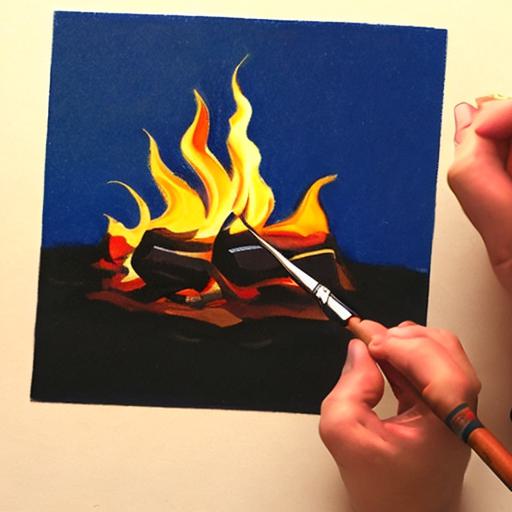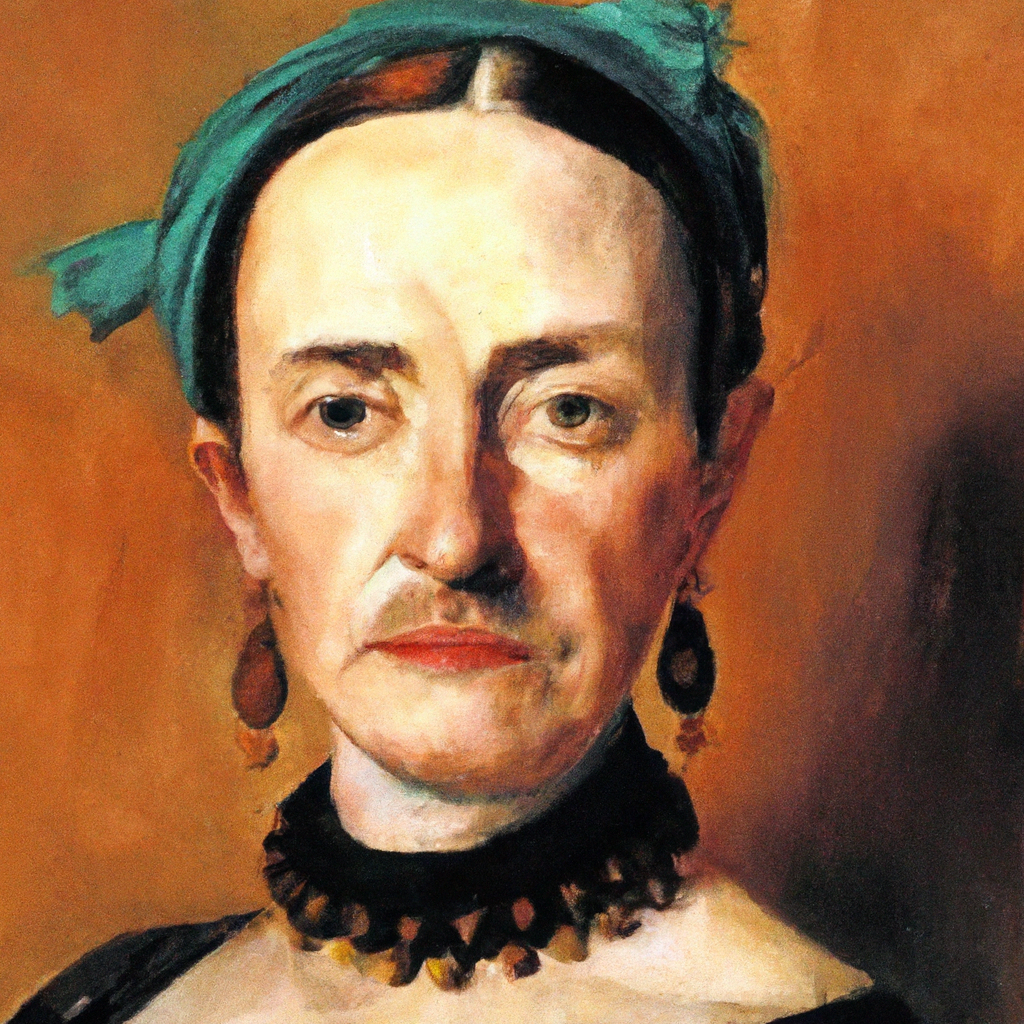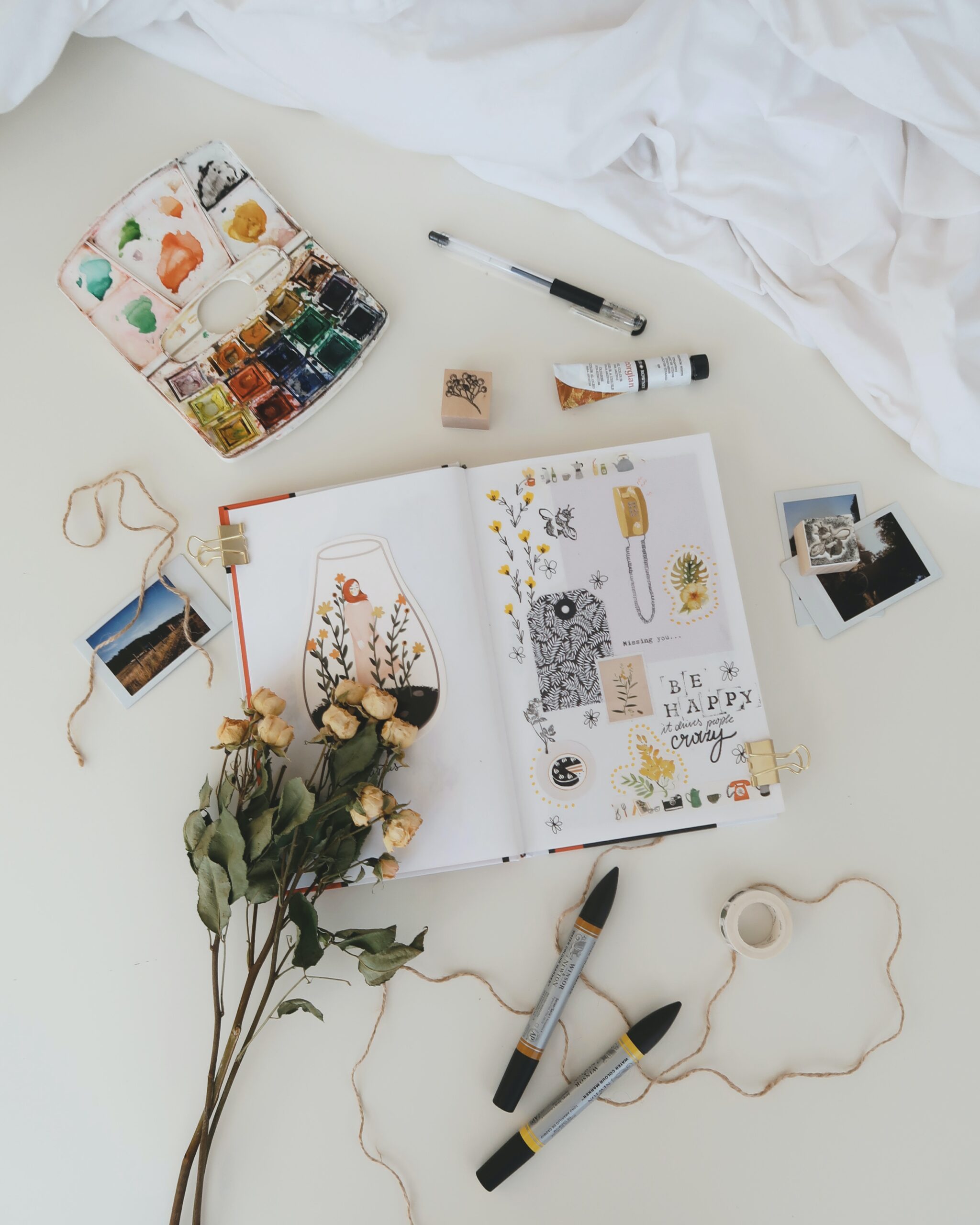In this article, you will learn the step-by-step process of creating a captivating fire painting using the versatile medium of gouache. By following these expert techniques and utilizing the unique qualities of gouache, you will be able to bring life and energy to your artwork.
From capturing the vibrant hues of flames to adding intricate details of glowing embers, this guide will equip you with the essential skills to create stunning fire paintings that captivate the viewer’s imagination. So, prepare your brushes and paints, and get ready to embark on an artistic journey to master the art of painting fire with gouache.
Materials Needed
To paint a realistic fire with gouache, you will need the following materials:
Gouache paints
Gouache paints are an excellent choice for creating vibrant, opaque colors. Make sure to have a variety of warm and cool colors, such as yellows, oranges, reds, and a range of dark shades.
Paintbrushes
Invest in a selection of high-quality paintbrushes in different sizes. A combination of flat and round brushes will give you more control over your brushstrokes and allow you to create various textures.
Watercolor paper
Choose a heavyweight watercolor paper that can handle the wetness of gouache paints. Look for a smooth or hot-pressed surface to achieve finer details in your fire painting.
Palette
A palette will serve as your mixing surface for blending colors. You can use a traditional palette made of porcelain or a disposable palette pad for convenience.
Water container
You’ll need a container filled with clean water to rinse your brushes between color changes.
Paper towels
Keep some paper towels handy to blot your brushes or clean up any spills and smudges during the painting process.
Preparation
Before you start painting, there are a few essential preparatory steps to take to set yourself up for success.
Set up workspace
Choose a well-lit and well-ventilated area to work in. Cover your work surface with a protective covering, such as a plastic tablecloth or an old sheet, to prevent any accidental spills or stains. Gather all your materials and arrange them within easy reach.
Choose reference image
Having a reference image is crucial for accurately capturing the fire’s shapes, colors, and textures. Look for high-quality images of fires that inspire you, whether it’s a candle flame or a roaring bonfire. Print out or have your reference image available on a digital device while you paint.
Sketch the composition
Before diving into painting, it’s helpful to plan out your composition with a quick sketch. Use a pencil to lightly outline the main shapes and elements of the fire. This step will give you a roadmap to follow and ensure better results in the final painting.
Color Mixing
Understanding color mixing is essential to creating a realistic fire effect with gouache paints. Pay attention to warm and cool colors, tints and shades.
Warm colors
Warm colors, such as yellows, oranges, and reds, evoke a sense of heat and intensity. Mix these colors together to achieve a vibrant and fiery palette.
Cool colors
Cool colors like blues and greens can be used sparingly to create contrast and add depth to the fire painting. They can represent the cooler areas within the flames.
Tints and shades
Create tints by mixing a color with white, which will result in lighter values. On the other hand, mixing a color with black or its complementary color will produce darker shades. Experiment with different combinations to achieve the desired intensity for your flames.
Base Layer
To start building up your fire painting, you’ll need to establish a base layer that sets the foundation for the flames’ colors and shapes.
Apply a thin wash of yellow
Begin by applying a thin wash of yellow to cover the areas where the fire will be. Use a large brush and dilute the paint with water to create a translucent layer. This wash will serve as the lightest base color for the flames.
Add a base layer of orange
Once the yellow wash is dry, start adding a base layer of orange paint. Use a smaller brush to define the shapes of the flames and gradually build up the color. Allow some of the yellow to peek through to create depth and dimension in the fire.
Gradually introduce red and darker shades
To intensify the fire’s appearance, gradually introduce red paint and darker shades of orange. Concentrate on the areas where the flames are most intense, such as the base or where fuel is burning. Apply these colors with fluid brushstrokes, following the contours of the flame shapes.
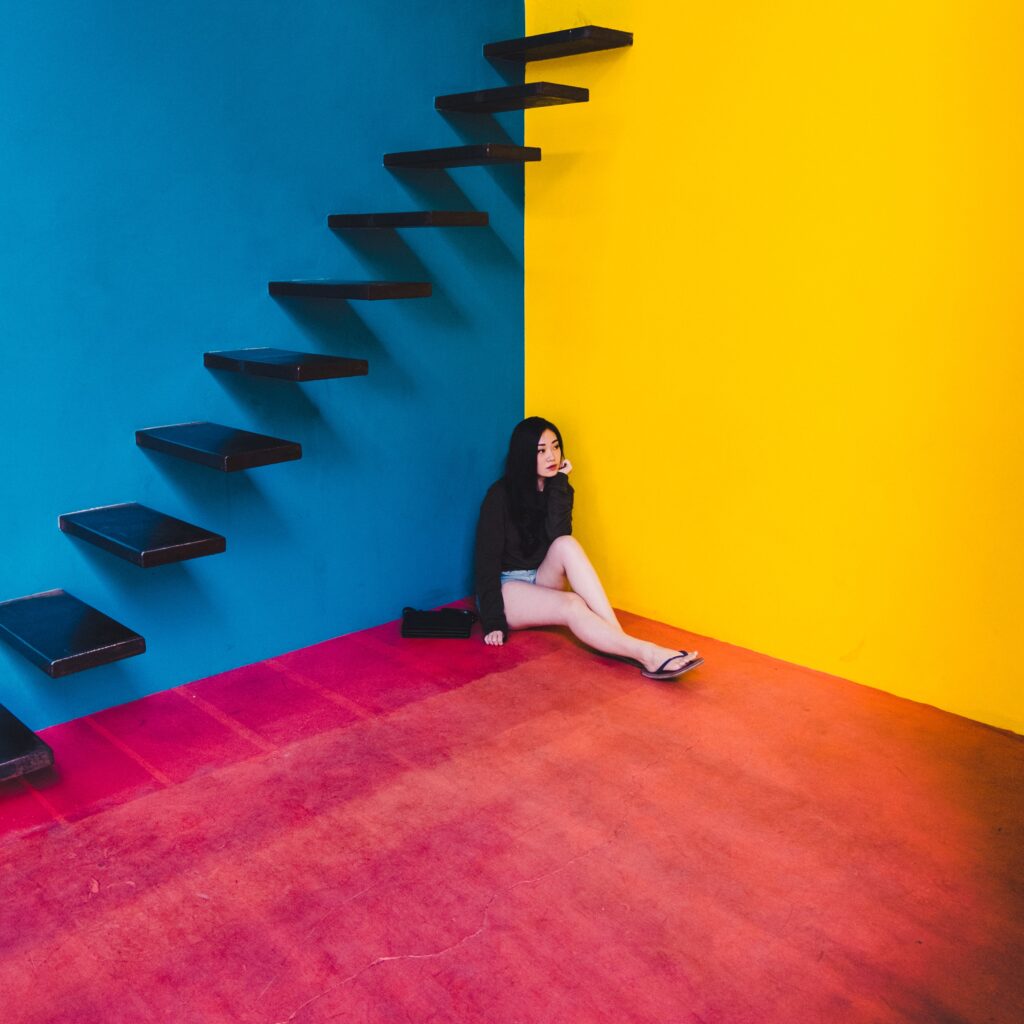
This image is property of images.unsplash.com.
Creating Flames
To make your fire painting truly come to life, you need to define the flames’ shapes, add highlights and reflections, and intensify colors near the base.
Define the shape of the flames
Using a small, pointed brush, carefully define the shape of each flame. Pay attention to the reference image and observe how the flames dance and curl. Use a combination of short and long brushstrokes to achieve a realistic flame effect.
Add highlights and reflections
Highlights and reflections give the appearance of light bouncing off the flames. To create these effects, mix a lighter tint of the flame’s base color and apply it along the edges of each flame. Leave some areas untouched to represent the brightest parts of the fire.
Intensify colors near the base
Focus on intensifying the colors near the base of the flames where the fire is hottest. Add darker shades of red and orange to create depth and dimension. Layer them carefully, allowing some of the lighter colors to show through. This technique will give your fire a realistic glow.
Rendering Smoke
To complete the fire painting, it’s important to capture the smoky elements surrounding the flames. Use varying shades of gray, apply soft brushstrokes, and blend edges for an organic look.
Use varying shades of gray
Mix different shades of gray by combining black with white and subtly introduce them into the areas where the smoke emerges from the fire. This will give the illusion of billowing smoke and help add depth to the painting.
Apply soft brushstrokes
To mimic the softness of smoke, use a soft-bristled brush and apply gentle, feathery brushstrokes. Start from the base of the flames and work your way towards the top, allowing the strokes to taper off and disappear.
Blend edges for a more organic look
Blend the edges of the smoke with the surrounding colors to create a seamless transition between the flames and the atmosphere. Use a clean, damp brush or a dry brush technique to soften any harsh lines and create a natural and ethereal effect.
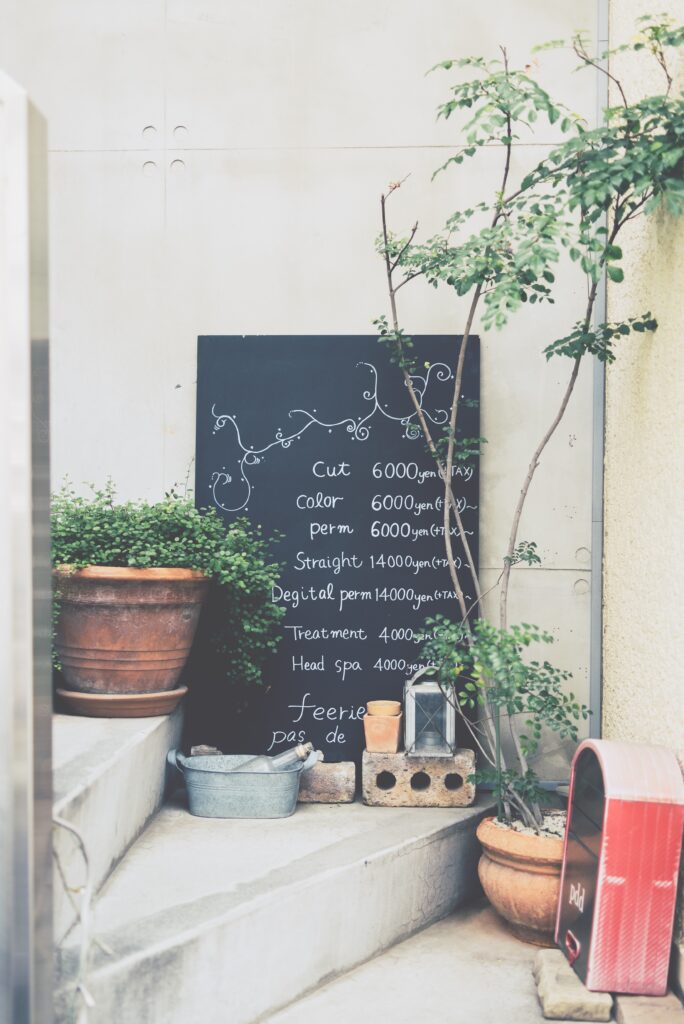
This image is property of images.unsplash.com.
Emphasizing Heat
To make the fire painting more dynamic and evoke a sense of heat, implement warm glows, add subtle smoke wisps, and enhance the intensity of the flames.
Add warm glows
Using a smaller brush and a mix of yellow and orange, carefully add warm glows to areas where the fire is at its brightest. Concentrate these glows around the base and along the edges of the flames to create a radiant effect.
Create subtle smoke wisps
Incorporate wisps of smoke near the top of the flames to add a sense of movement and ethereality. Use very subtle gray brushstrokes to achieve this effect. Don’t overdo it – a few delicate wisps can go a long way in enhancing the overall composition.
Enhance the intensity of the flames
To increase the fire’s intensity, layer additional strokes of red and orange in the areas closest to the flames’ base. Build up these colors gradually, allowing the underlying layers to shine through. This technique will give your flames a mesmerizing and dynamic appearance.
Adding Details
To elevate your fire painting further, consider including crackling embers, smoldering logs, and enhancing the background if necessary.
Paint crackling embers
With the help of a small, pointed brush, add small flicks and dots of intense red and orange in and around the base of the flames. These represent the crackling embers and add a realistic touch to the fire.
Include smoldering logs
If your reference image shows logs or wood as the source of the fire, use darker shades of brown and black to paint them in. Pay attention to the log’s texture and add highlights and hints of red and orange to suggest the heat emanating from them.
Enhance the background if necessary
Assess your overall composition and determine if the background needs any additional elements or adjustments. You can add hints of dark blue or black to represent the night sky, or incorporate silhouettes of trees or other objects to complement the fiery scene.
Final Touches
While your painting may already be looking stunning, a few final touches can elevate it even further. Take these steps into account to add those finishing touches.
Adjust overall color balance
Stand back and assess the colors of your fire painting. If necessary, make any adjustments to ensure a harmonious color balance. Introduce more warm or cool tones, or increase or decrease the overall intensity where needed. Trust your artistic eye and make tweaks accordingly.
Refine any details
Take a close look at your painting and refine any details that require attention. Smooth out any rough edges, add finer highlights, or make subtle changes to the flames or smoke wisps. This step will ensure a polished and professional-looking fire painting.
Allow the painting to dry completely
Gouache paints take some time to dry fully. It’s crucial to let your painting dry completely before handling or framing it. Follow the manufacturer’s instructions for drying times or wait at least 24 hours. This will prevent any smudging or damage to your beautiful fire artwork.
Tips and Tricks
To enhance your fire painting skills and achieve the best possible results, keep these tips and tricks in mind.
Experiment with different techniques
Don’t be afraid to explore various techniques to create different flame shapes and add depth to your composition. Practice different brushstrokes, layering techniques, and color combinations to find what works best for you.
Use reference images for guidance
Referencing high-quality images of fires throughout your painting process can be invaluable. These images will help you understand the interplay of colors, shapes, and textures, and guide you in achieving a realistic and captivating fire painting.
Practice creating various flame shapes
Flames come in many shapes and sizes, depending on the type of fire and fuel burning. Dedicate some time to practice painting different flame shapes, from elongated and pointed flames to flickering and dancing flames. By mastering these variations, you’ll be able to create more dynamic and engaging fire paintings.
With these steps, materials, and tips in mind, you’re well-equipped to paint a remarkable fire using gouache. Remember to enjoy the process and let your creativity shine through as you bring your fiery masterpiece to life. Happy painting!

